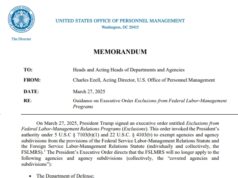by Del. Paul Krizek, Labor Liaison to the Virginia House Democrats
The founding principle of American society, written by Thomas Jefferson in the Declaration of Independence, is that each one of us has a right to life, liberty and the pursuit of happiness. And a key ingredient to that is the ability to provide for yourself and your family. Yet, today too many individuals are forced to work multiple jobs just to make enough money to earn a livable wage. As earnings for corporations and CEOs rise at an astronomical rate, everyday Americans are not seeing the same proportional increases in their wages.
Income inequality has risen to dangerous levels. The top one percent earn 20 percent of the total income, while the bottom 50 percent earn just 12 percent of the total income. The last time it was this bad was 1928 – and the following year was the start of the Great Depression. To make matters worse, the Brookings Institute found that since 1979, the lower middle class has seen their real wages decrease over the last 40 years, while the top percentile has seen their real wages increase by 27 percent. This type of inequality tears at the fabric of the American Dream. Americans can’t climb the economic ladder or build a better life for their children if they can barely afford to pay their mortgage and put food on the table.
The growth of income inequality in this country is attributed to many causes, including automation, globalization and a tax code that favors the wealthy, but one factor that is often overlooked is the decline of unions. Unions were created to protect the rights of labor against company management that took advantage of their workforce. They fought to ensure safe working conditions and fair wages. But contrary to some misconceptions, strong unions do not equal weak business. American companies are only as good as their workers, and unions – through apprenticeship programs, high quality workforce training and advocacy for equal pay and benefits – help guarantee employers a strong, safe and valued workforce.
A recent Princeton study found that on average over the last 80 years, union workers make around 15-20 percent more than non-union workers in the same field. The study also found that unions can help increase the wages of non-union workers. Going back every year to the 1930s, in states where workers were more likely to be unionized, income inequality was lower and wages rose faster. This trend occurs because companies must offer wages and benefits that can compete with others in the industry that are paying union wages. In communities where unions are strong, all workers, regardless of union status, earn higher pay.
Unfortunately, union membership has taken a nosedive since the 1970s. According to the Economic Policy Institute, in 1979, 34 percent of private sector workers belonged to unions while in 2016 that number was only 10 percent. They found that if union membership levels returned to the 1979 levels in 2016, non-union men without a high school degree would see their wages increase by nine percent – amounting to an extra 3,000 dollars a year. Non-union workers’ wages are declining in large part because employers are not compelled to raise wages and increase benefits to compete with union salaries.
Will it ever be possible to raise union density to the levels seen in the mid-20th century? We have seen unions gutted through “right to work” laws in 28 states (including Virginia), as well as the landmark Supreme Court ruling earlier this summer that public sector unions may not force workers benefiting from the union to pay union fees. However, there have been bright spots to the union movement and reminders that it can still make a huge difference in the lives of workers and contribute to building a fair economy when given the opportunity. This week a federal judge ruled that the President violated the Constitution by attempting to deny federal workers their legal right to representation. And earlier this summer, voters in Missouri resoundingly voted down a “right to work” proposition by over 67 percent, including 50 percent of Republicans, thereby allowing unions to require the payment of union fees. A recent Gallup poll has labor unions’ approval rating at 61 percent, a 15-year high. Furthermore, the teachers’ unions’ strike in West Virginia resulted in a five percent salary increase.
On this Labor Day, we would do well to remember that union strength not only benefits employees, but the economy in its entirety, and most importantly, it is a much-needed antidote to income inequality.



 Sign up for the Blue Virginia weekly newsletter
Sign up for the Blue Virginia weekly newsletter






![Video: UVA Prof. Larry Sabato Says We “Need to Take [Trump] Seriously” Regarding His Threat to Seek a Third Term](https://bluevirginia.us/wp-content/uploads/2025/03/sabatocnn1-100x75.jpg)

